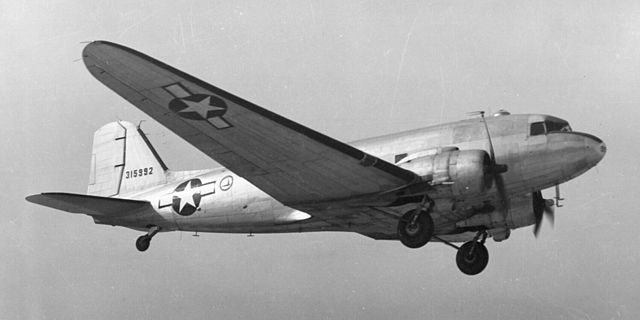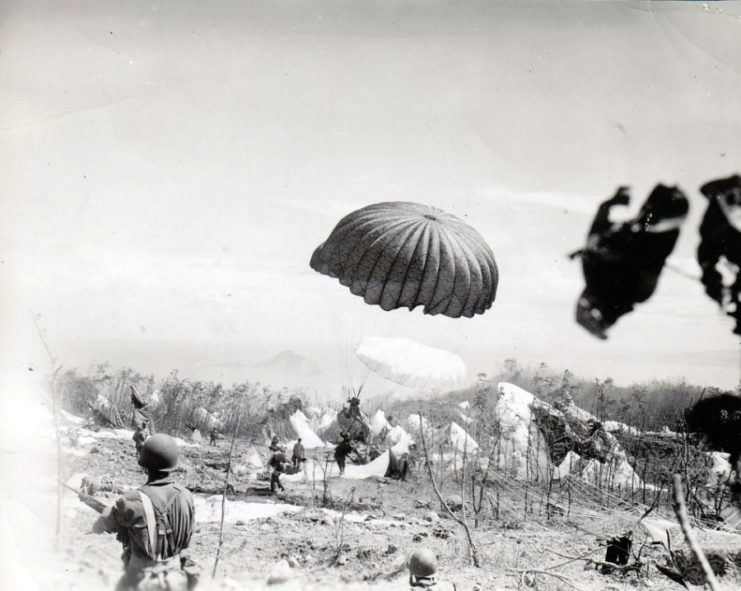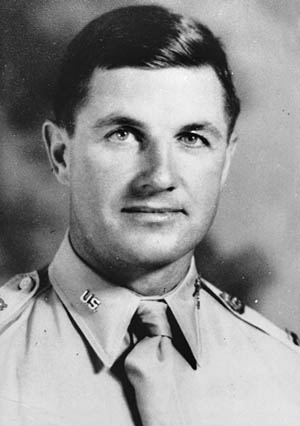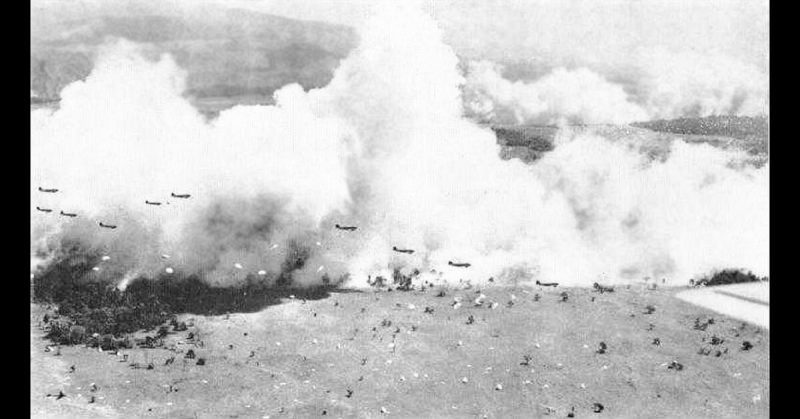When American forces arrived in North Africa in November 1942, the 503rd Parachute Battalion were among the first troops on the ground. A week later, they headed east to take control of a strategic area known only as the “high ground.”
In the days that followed they used cunning and daring to outmatch numerically superior Axis troops.
Colonel Raff and the 503rd
The 503rd Parachute Infantry Regiment was a regiment with only one battalion. Its deceptive name was meant to make it seem that America had more paratroopers than it did. Among US forces, it was sometimes referred to as the 503rd Parachute Infantry Battalion. Its commander was Colonel Edson D. Raff.
The 503rd’s arrival in Tunisia had been America’s first ever parachute assault. It had not gone smoothly. Planes had been lost in bad weather on the way from England. Plans for the initial landing had gone awry. There had been a friendly fire incident in which American paratroopers fought American tanks.
They had a lot to prove and would have to do it with limited resources. Following the initial action, they were left understrength, with only 350 men.
Finding the High Ground
The task they had been given was to seize an area of high ground close to the front. The airfields there would give the Allies a good forward position for their aircraft. They could start wearing away at German dominance in the air.
At 0800 on November 15, thirty-three C-47 transport planes took off from Maison Blanche Airport. They carried the 503rd toward their target.

The initial objective was a small airfield near the Algerian city of Tébessa. Raff had learned from friendly French forces about a larger airfield at the town of Youks-les-Bains. Using an old French flying map as a guide, he led his troops there.
Three Airfields
Arriving over Youks-les-Bains, the Americans parachuted into a potentially deadly situation.
French troops held the airfield. The whole region had been Vichy French just over a week before, and therefore under German domination. On seeing American forces arrive, some French soldiers immediately switched sides, while others fought back. If those at Youks-les-Bains opened fire on the descending American paratroopers, they would be exposed and killed.
Fortunately, the French proved friendly. Both airfields were in the hands of the 503rd and their new friends.
From there, they moved on to take a third airport at Thélepte which was nearer to the front. It would be invaluable to the Allies, but it left the undermanned 503rd thinly spread and close to the enemy. They were unsure who might be over the next ridge, even after reinforcements arrived.
Fighting for Gafsa
Raff and his men were out on a limb. Rather than dig in and just act defensively, they took the opportunity to harass German forces in the surrounding area.
French intelligence reports told Raff that Axis troops would be advancing on the nearby city of Gafsa. He destroyed 70,000 gallons of fuel stored there, then pulled his men out.
Once the Germans were in Gafsa, Raff brought together a small force of paratroopers, American reinforcements, and French soldiers. With support from Raff’s tiny four-plane airforce, they attacked Gafsa. They took out most of the German machine-guns and anti-tank weapons in the first few minutes.
The Germans pulled out, leaving Gafsa in American hands.

Fighting the Italians
Next came a report of Italian tanks at El Guettar, east of Gafsa. Raff sent his forces out to meet the new threat. They destroyed five enemy tanks, and the Italians retreated.
News arrived of German forces at Sbeitla, 76 miles north of Gafsa. Again, Raff moved quickly, sending men to take out a potential threat.
On November 24, already tired from days of marching and fighting, the assault force reached Sbeitla. They found the Germans had handed the town over to their Italian allies.
The Americans went on the attack against a force which, unlike them, had tanks. After brief fighting, the Italians surrendered. The small Allied force destroyed a dozen light tanks and captured 100 prisoners.
Bluffing the Germans
Raff’s swift and decisive attacks had created an illusion. The Axis forces believed they were facing a much larger force than they were.
Using a small, highly mobile force, Raff was controlling an area far too large for his men to defend adequately. The Germans stopped their forward probes and settled in to fortify the Faïd Pass.

Faïd Pass
Raff did not want to leave the Germans in control of the pass, a valuable route through the mountains. Together with American infantry and tank destroyers, as well as a company of Algerian troops, he set out to attack them again.
They advanced along a smaller pass five miles south. The Germans did not defend it, but it was heavily mined. Getting through the minefield took longer than hoped and dawn broke while they were still in the pass, spoiling the surprise.
For three days, they became bogged down in fierce fighting for Faïd Pass, attacking the Germans from both east and west.
On the fourth day, the Allies launched a heavy artillery barrage. As soon as it stopped, their troops charged with grenades and bayonets. In minutes, they took control of the pass.
A Challenging But Valuable Position
In less than three weeks of fighting, the 503rd and their colleagues had driven the Axis from an area of strategic significance. They had taken forward positions from which vital air attacks would be launched.
However, they were vulnerable if the enemy attacked in force. Valuable as their contribution was, the danger was far from over.
Source:
Orr Kelly (2002), Meeting the Fox: The Allied Invasion of Africa, from Operation Torch to Kasserine Pass to Victory in Tunisia
